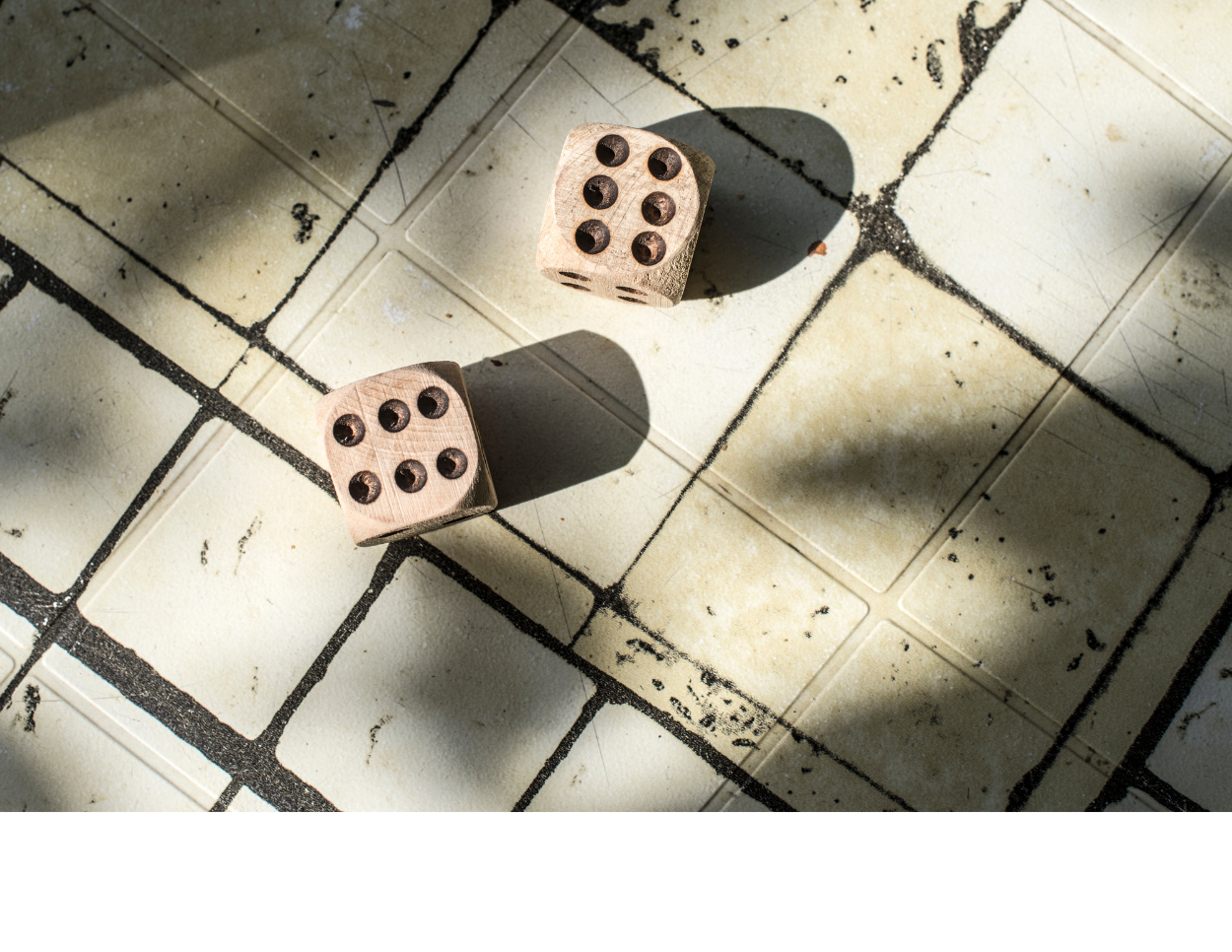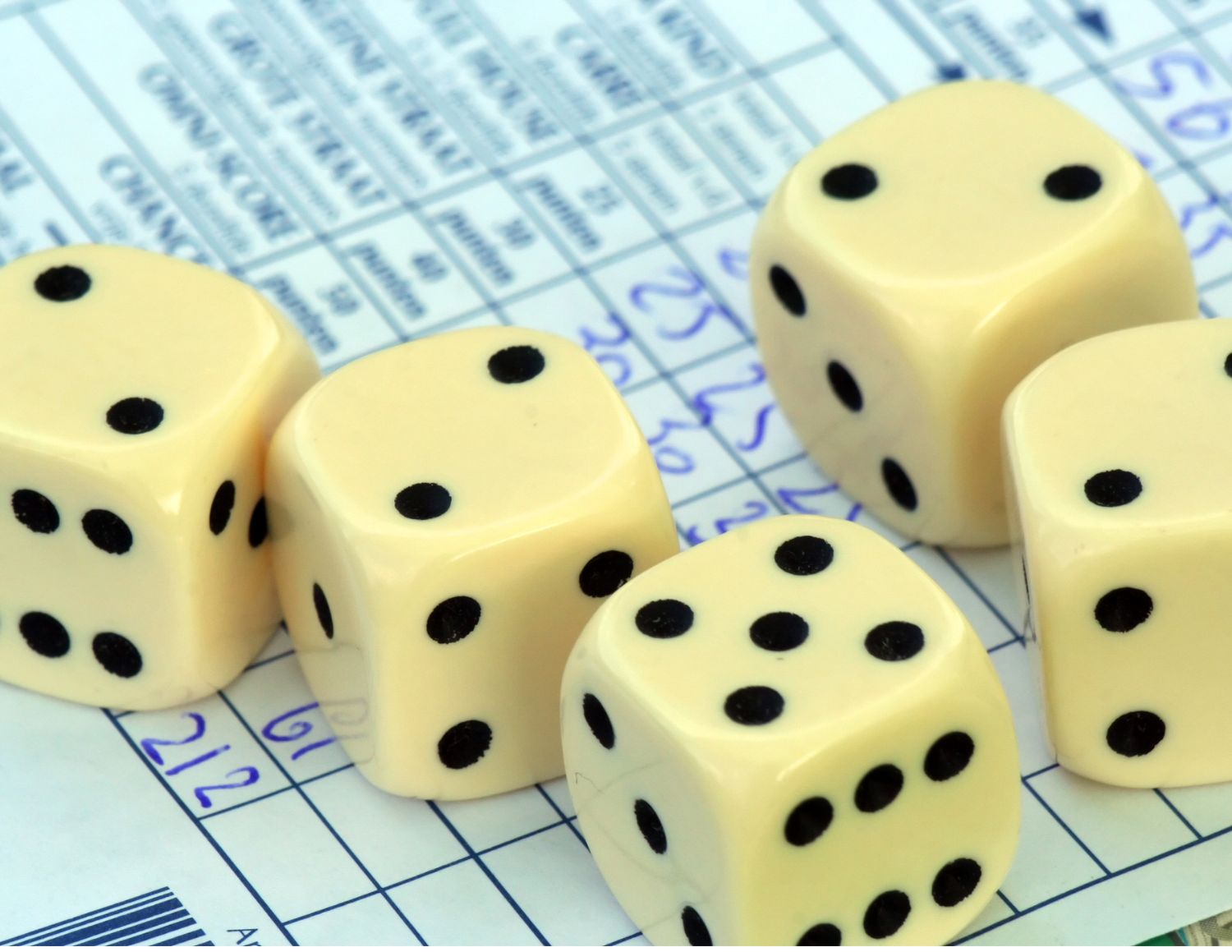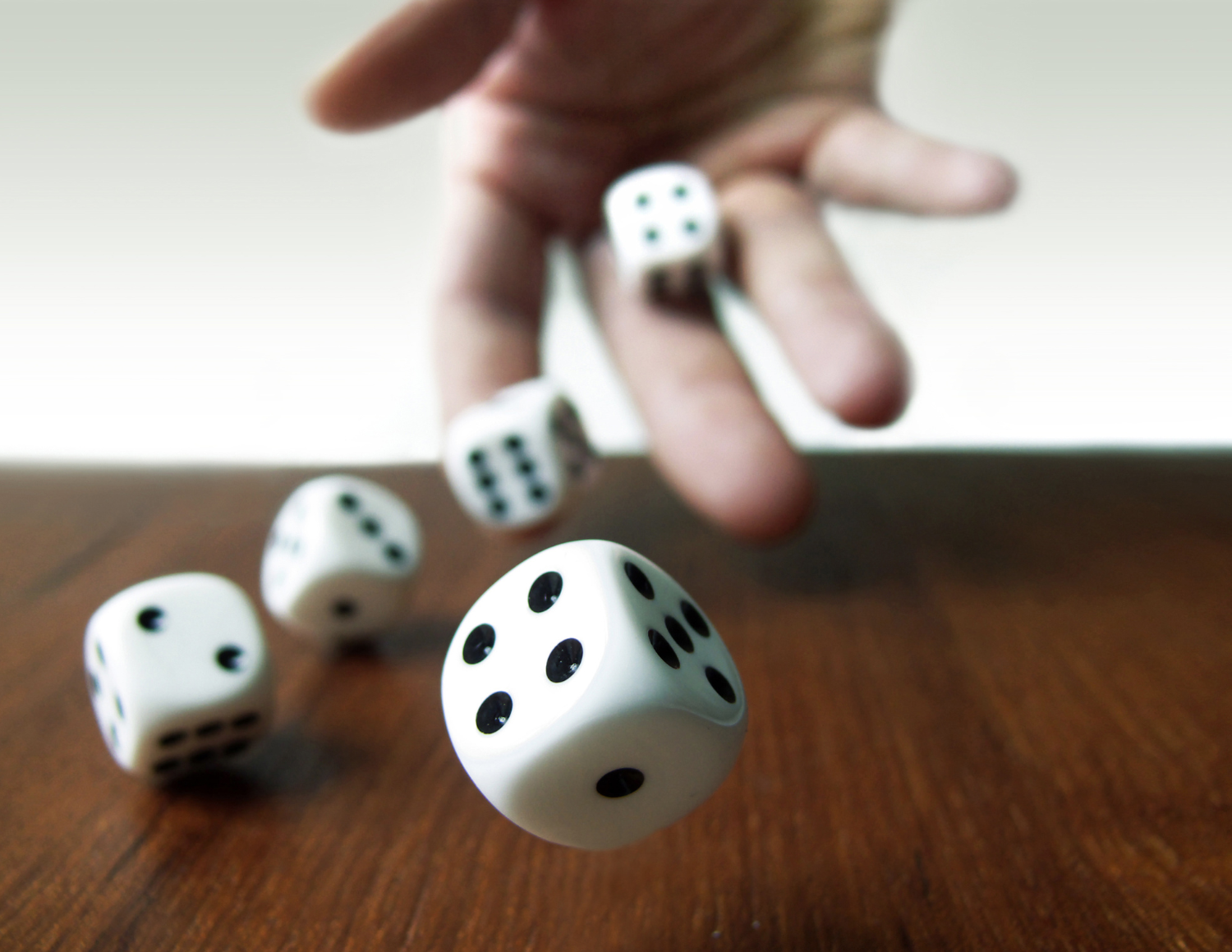
Dice have played a significant role in shaping the way humans play games, from ancient civilizations to modern tabletop games. These simple objects, whether made from bone, plastic, or digital materials, represent our enduring fascination with chance and probability.
The story of dice in board games is a remarkable journey through time. What started as basic tools for fortune-telling transformed into finely crafted instruments of entertainment, adding an element of surprise to countless gaming experiences. This change reflects broader developments in human civilization, such as technological advancements and mathematical understanding.
Key Elements of Dice Evolution:
- Ancient religious and ceremonial uses
- Development of standardized shapes and materials
- Integration with strategic gameplay mechanics
- Emergence of specialized dice types
- Influence on modern game design
Dice do more than just introduce randomness – they create moments of tension, excitement, and strategic decision-making. In this article, we’ll explore the history and evolution of dice, uncovering how these unassuming objects have become essential components in the design of board games.
The Origins of Dice in Board Games
Ancient civilizations viewed dice as sacred tools, bridging the gap between divine will and human destiny. The Sumerians, pioneers of early dice games around 3000 BCE, crafted elaborate game boards featuring intricate patterns and religious symbols. These games served dual purposes – entertainment and spiritual divination.
The practice spread across neighboring civilizations:
- Egyptian priests used dice in religious ceremonies to interpret the gods’ wishes
- Greek temples housed specialized dice rooms for both worship and recreation
- Roman soldiers carried dice as good luck charms into battle
The earliest dice weren’t the perfect cubes we know today – they were knucklebones from sheep and other animals. These irregular shapes created unique gameplay experiences:
- Natural curves and protrusions affected rolling patterns
- Four distinct sides offered different landing possibilities
- Each face held special significance in divination rituals
Archaeological discoveries reveal the cultural importance of these primitive dice:
“The Royal Game of Ur,” discovered in ancient Mesopotamia, combined both chance and strategy using knucklebones as randomizing elements.
The unpredictable nature of knucklebones added an element of mystery to early gaming experiences. Players attributed favorable rolls to divine intervention, while unfavorable outcomes were seen as omens. This spiritual connection transformed simple games of chance into profound cultural experiences that shaped early civilizations’ understanding of fate and fortune.
The Evolution of Dice Design
The shift from irregular knucklebones to standardized dice shapes was a significant advancement in gaming history. The six-sided die (d6) became the most popular design across various civilizations, providing balanced probability and easy handling during gameplay.
Ancient Preferences for Dice Materials
Different ancient civilizations had their own preferred materials for making dice:
- Roman Empire: Carved bone and ivory dice, often featuring intricate decorative patterns
- Chinese Dynasties: Jade and precious stone dice, symbolizing wealth and status
- Nordic Cultures: Wooden dice with burned or carved number markings
- Indian Subcontinent: Clay and terracotta dice used in religious ceremonies and games
Improvements in Dice Craftsmanship During the Middle Ages
The Middle Ages saw significant improvements in the craftsmanship of dice. With the introduction of metal tools, artisans were able to create precise edges and uniform faces, resulting in more reliable rolls. These advancements led to:
- Enhanced corner symmetry
- Balanced weight distribution
- Consistent size standardization
- Improved number marking techniques
Emergence of Specialized Guilds and Manufacturing Standards
During this period, specialized guilds of dice makers emerged. They developed proprietary methods for:
- Material selection and treatment
- Surface finishing
- Number placement
- Quality control measures
These medieval craftsmen established manufacturing standards that influenced dice production well into the Renaissance period. Their techniques laid the groundwork for future mass-production methods, while their attention to mathematical precision helped reduce cheating in gambling establishments.
The Impact of the Renaissance on Dice Mechanics
The Renaissance period marked a significant turning point in the design of dice and the mechanics of games. During the 15th and 16th centuries, there was an intellectual revolution in Europe that brought mathematical concepts to the forefront, completely transforming our understanding of probability and chance.
Mathematical Pioneers
Several key figures played a crucial role in shaping the field of probability during this time:
- Gerolamo Cardano’s groundbreaking work “Liber de Ludo Aleae” (Book on Games of Chance) introduced the first systematic analysis of probability in dice games
- Blaise Pascal and Pierre de Fermat developed probability theories through their correspondence about gambling problems
- These mathematical foundations led to precise calculations of odds in dice rolls
The Renaissance’s revival of mathematics also had a direct impact on the manufacturing standards of dice. Craftsmen began applying these principles to their craft, resulting in:
- Precise edge measurements
- Equal face dimensions
- Balanced weight distribution
- Symmetrical corner angles
This scientific approach to creating dice ensured fairer gameplay experiences, as each roll became more predictable and unbiased.
Influence on Game Design
With the newfound understanding of probability, game designers started incorporating these concepts into their mechanics. This led to the development of various gameplay elements such as:
- Strategic risk-reward decisions
- Balanced combat systems
- Resource management mechanics
- Multi-dice probability curves
By integrating calculated probabilities into their designs, creators were able to craft more engaging and balanced experiences for players.
Legacy in Modern Board Games
The combination of mathematics and game design during the Renaissance laid down principles that are still widely used today in board game development.
Designers now have a deeper understanding of how different combinations of dice can affect outcomes, allowing them to create gameplay experiences that strike a balance between luck and strategic decision-making.
This legacy serves as a reminder of the profound impact that this era had not only on mathematics but also on the world of gaming as we know it today.
Industrial Revolution: Mass Production and Uniformity in Dice Making
The Industrial Revolution marked a significant turning point in dice manufacturing. It brought about a fundamental change in production methods, introducing mechanization and standardization.
The Shift from Hand-Crafting to Mechanized Production
During this period, the introduction of automated machinery replaced traditional hand-crafting techniques. This shift allowed manufacturers to produce dice at unprecedented speeds while maintaining consistent quality.
Key Manufacturing Innovations:
- Steam-powered machinery for precise cutting and shaping
- Automated polishing systems for uniform surfaces
- Standardized molds for consistent size and weight
- Quality control processes for detecting imperfections
The Impact of Plastic Materials on Dice Manufacturing
In the early 20th century, the advent of plastic materials added a new dimension to dice manufacturing. Plastic offered several advantages over traditional materials:
- Cost-effective production at scale
- Resistance to wear and damage
- Uniform weight distribution
- Consistent rolling behavior
- Wide range of color options
These advancements proved crucial for the success of mass-market board games. Monopoly, released in 1935, became an early beneficiary of plastic dice manufacturing. The game’s widespread popularity demanded millions of identical dice pairs – a requirement that would have been impossible to meet using traditional production methods.
The Benefits of Standardization in Dice Manufacturing
The standardization of dice manufacturing also reduced the prevalence of weighted or “loaded” dice in gaming establishments. Machine-made dice featured precise edges, corners, and pip indentations, making tampering more difficult and ensuring fairer gameplay across all gaming contexts.
The Rise of Role-Playing Games and Polyhedral Dice
The 1970s marked a revolutionary shift in tabletop gaming with the release of Dungeons & Dragons. This groundbreaking role-playing game introduced a radical innovation: polyhedral dice sets featuring multiple geometric shapes beyond the traditional d6.
These specialized dice included:
- d4 (tetrahedron) – for small weapon damage
- d8 (octahedron) – medium weapon strikes
- d12 (dodecahedron) – heavy weapon impacts
- d20 (icosahedron) – determining success of player actions
The varied shapes created nuanced probability ranges, enabling game designers to craft intricate combat systems and skill checks. A d20 roll provided a 5% chance for any specific number, while a d4 offered a 25% probability – these mathematical differences allowed for precise difficulty scaling in gameplay mechanics.
Polyhedral dice transformed role-playing games into sophisticated probability engines. Players could now experience:
| Die Type | Sides | Common Use |
|---|---|---|
| d4 | 4 | Damage rolls in RPGs |
| d6 | 6 | Standard in classic board games |
| d8 | 8 | Combat in RPGs |
| d10 | 10 | Percentile rolls |
| d12 | 12 | Specialized RPG mechanics |
| d20 | 20 | Core die in D&D |
- Graduated weapon damage systems
- Complex skill resolution mechanics
- Varied character attributes
- Layered combat encounters
The success of D&D’s dice system inspired countless other tabletop games to adopt polyhedral dice. Game designers discovered new ways to integrate these varied probability ranges into their mechanics, from determining critical hits to resolving complex spellcasting scenarios. This mathematical diversity sparked a creative renaissance in game design that continues to influence modern tabletop gaming.
Modern Innovations: Specialized Dice Types and Digital Tools for Randomization
The world of board gaming has seen a surge in creative dice designs, each made to enhance specific gameplay mechanics and bring out thematic elements. Custom dice with distinct symbols have become essential to games like Elder Sign, where specialized glyphs signify various actions and results connected to the game’s Lovecraftian horror theme.
Specialized dice types include:
- Story Dice: Feature images or symbols that prompt narrative development
- Combat Dice: Display weapon types, damage values, and defense symbols
- Resource Dice: Represent different materials or currencies within game economies
- Fate/Destiny Dice: Utilize unique symbols for success, failure, or special effects

Digital innovation has transformed dice rolling through virtual platforms and companion apps. Games like XCOM: The Board Game integrate smartphone applications to generate random events and manage probability calculations, creating hybrid experiences that blend physical and digital gameplay.
The emergence of exploding dice mechanics – where specific results trigger additional rolls – has added new layers of excitement to games like Savage Worlds. These systems create dramatic moments and expand the range of possible outcomes beyond traditional probability curves.
Custom dice pools have revolutionized game design, allowing players to build and modify their dice collections throughout gameplay. Star Wars: X-Wing exemplifies this approach, using color-coded attack and defense dice to represent different ship capabilities and tactical options.
Balancing Chance and Strategy: The Role of Randomness in Board Game Design
Game designers face a delicate challenge when incorporating chance mechanics into their creations. The sweet spot lies in creating uncertainty without sacrificing player agency. This balance transforms games from pure luck-based activities into engaging strategic experiences.
Key Design Principles:
- Decision Points After Randomization: Games like King of Tokyo allow players to reroll dice multiple times, creating meaningful choices after the initial random outcome
- Risk Management: Pandemic uses a deck of infection cards to create tension while letting players develop strategies around probable outcomes
- Mitigation Mechanics: Popular games like Settlers of Catan include development cards and trading options to help players overcome unfavorable dice rolls
Successful implementation of chance mechanics creates dynamic gameplay experiences where players must adapt their strategies based on random elements. Stone Age exemplifies this approach by combining worker placement strategy with dice rolling for resource gathering. Players can influence outcomes through tool cards and careful resource management.
The psychological impact of randomness adds excitement to games through:
- Unexpected moments of triumph
- Dramatic reversals of fortune
- Increased replayability
- Natural difficulty scaling
Modern designers recognize that chance elements work best when they create opportunities for strategic thinking rather than determining outcomes entirely. This philosophy has led to innovations like push-your-luck mechanics in games such as Quacks of Quedlinburg, where players actively choose how much risk to take.
How Probability Theory Influences Board Game Design
Probability calculations are essential in modern board game design, shaping player experiences through carefully crafted mechanics. Let’s explore how probability theory influences various aspects of board game design, including insights from this comprehensive study on probability in board games.
Probability in Action: Examples from Popular Games
1. Pandemic: Masterful Probability Integration
Designed by Matt Leacock, Pandemic showcases skillful use of probability through its infection deck system. The game’s rising tension comes from carefully calculated probability distributions that increase the chances of epidemics happening at specific intervals.
2. Risk: Classic Example of Probability-Driven Design
Risk, a timeless example of probability-driven design, employs dice combat mechanics based on statistical analysis. The attacking player’s advantage with larger armies reflects meticulously balanced probability ratios, adding strategic depth through mathematical principles.
Successful Probability Implementation in Board Games
Here are some examples of successful probability implementation in board games:
- Deck building games like Dominion use probability theory to balance card availability and purchasing power
- Worker placement games such as Agricola incorporate probability calculations to determine resource distribution rates
- Dice-based games like King of Tokyo feature probability-weighted decisions through custom dice faces
How Game Designers Use Probability Mathematics
Game designers leverage probability mathematics to achieve the following:
- Create balanced victory conditions
- Design fair resource distribution systems
- Calculate optimal player counts
- Structure meaningful player choices
The Role of Modern Design Tools
Modern design tools play a crucial role in board game development by enabling precise probability mapping. These tools allow creators to test thousands of potential game states, resulting in games with predictable long-term outcomes while still offering thrilling gameplay experiences.
Balancing Resource Generation: An Example from Settlers of Catan
Settlers of Catan serves as an example of this balance achieved through its resource generation system. In the game, numbered tokens correspond to specific probability curves based on two-dice combinations, ensuring fair resource distribution among players over time.
By understanding and applying principles from probability theory, board game designers can create engaging experiences that challenge players strategically while maintaining a sense of unpredictability and excitement.
The Enduring Legacy of Dice in Gaming Culture
The tactile satisfaction of rolling physical dice continues to captivate players in our digital age. This enduring appeal has sparked innovative hybrid approaches, combining traditional dice mechanics with cutting-edge technology:
- Augmented Reality Dice create immersive experiences by projecting digital effects and animations when physical dice are rolled
- Smart Dice equipped with sensors track roll statistics and integrate with digital scoring systems
- Custom-Printed Dice featuring unique symbols and mechanics enable fresh gameplay experiences
The future of dice in gaming points toward increased customization and technological integration. Game designers are experimenting with:
- Dice that change properties during gameplay
- Environmental factors affecting roll outcomes
- Dynamic probability systems that adapt to player choices
Despite these technological advances, the fundamental thrill of dice rolling remains unchanged. The satisfying clatter of dice across a game board creates moments of suspense and excitement that digital alternatives struggle to replicate. This blend of tradition and innovation ensures dice will remain central to gaming culture, bridging past and future generations of players.




